SaaS SEO Guide
Best SaaS SEO metrics and KPIs to track
Book a FREE SEO Strategy Consultation >
Further Reading:
- SaaS SEO Strategy
- SaaS SEO Checklist
- SaaS Technical SEO
- SaaS SEO Audit
- SaaS Keyword Research
- SaaS SEO Content
- SaaS SEO Copywriting
- E-A-T for SaaS
- Enterprise SaaS SEO
- SaaS SEO Metrics and KPI's
- SaaS SEO Attribution
- VOIP and Telecommunications SEO Strategy
- SaaS Link Building
- Payroll and Finance SaaS SEO
- SaaS SEO Agency
- SaaS Link Building Agency
You already know the importance of SEO for running an online business. But your strategy needs to include some way of measuring the performance of your SEO activities, otherwise you won’t know what’s working and what isn’t.
SEO metrics help you to quantify the performance and success of a search engine optimization campaign, and they’re vital for SaaS businesses to ensure that users stay engaged and continue their subscriptions.So, what are the best SaaS SEO metrics to track? We’ll tell you all you need to know, including key performance indicators for SaaS companies and the best tools to use for SEO measurement.
How is SEO for SaaS different?
SaaS SEO refers to search engine optimization tactics specifically for Software as a Service companies. As with all types of online business, the aim of SEO is to increase organic search visibility and boost traffic by earning top rankings on the SERPs. But for SaaS, the strategy is a little different.
SEO is arguably even more important for SaaS than for other industries, because of the type of product you’re selling. Software can be complex and represents quite an investment, so you have to prove its worth to potential customers—and go on doing that as they become users in order to retain them for the long term.
Intangible products require extra brand awareness, so your website and content have to be easily discoverable by search engines and visitors alike. And for Google to place your site at the top of the rankings, you need engaging content with relevant keywords and high-authority links. A great website experience is also essential, which requires technical SEO.
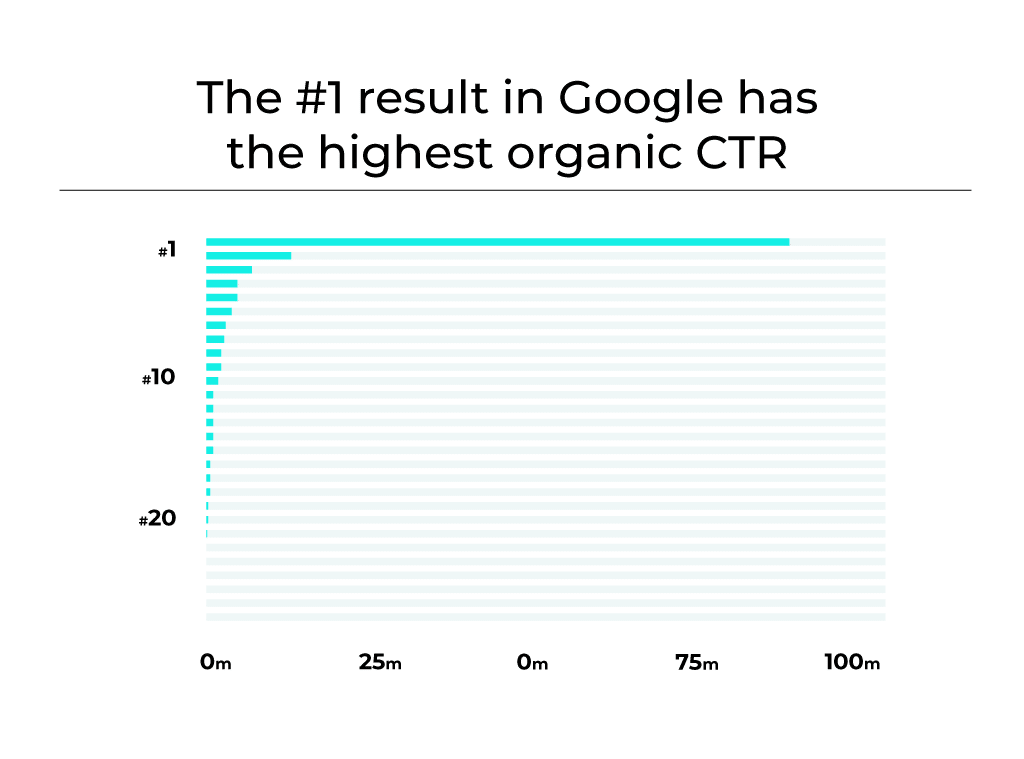
SaaS businesses tend to have lots of competitors with similar products, so you need to differentiate by making your content better than theirs (more in-depth, better formatting, easier to understand). Competitor analysis is part of SEO, as well as targeting keywords that align with your target audience’s pain points and challenges.
SEO enables SaaS brands to identify content opportunities, and position themselves as thought leaders. Authoritative content will naturally earn you backlinks, which are vital for SaaS as you’ll struggle to rank for competitive keywords without them. Link-building strategies get your content in front of the right people, and help to drive referral traffic.
Because B2B SaaS has a long sales cycle, it can often take a while to see a significant ROI. That means you need specific metrics and KPIs to evaluate ongoing performance, while larger businesses with complex websites should pay attention to enterprise SEO metrics.
SEO dashboard: The key to understanding SEO performance
Before we get started, let’s just clear up the difference between metrics and KPIs. Key performance indicators support your strategic business goals, and measure how well you’re accomplishing them. Metrics are also quantifiable, but they’re used to evaluate the success of the tactical activities that support the KPIs.
The best way to keep an eye on your key metrics and KPIs and to understand SEO performance—is via a dedicated SEO dashboard. Dashboards display web analytics data from various sources on a central screen, presenting it in a visual format so that everyone can see what’s happening at a glance.
You can also drill down into different SEO metrics, to look more closely at where your web visitors are coming from, how long they spend browsing your site, and how many of them convert to paying customers.
Tools like Google Analytics, SEMrush, and Ahrefs all let you create your own dashboards.
As well as tracking and analyzing your data, you can generate regular reports to share with stakeholders. (SEO experts like accelerate agency also deliver reports after doing the analysis for you.)
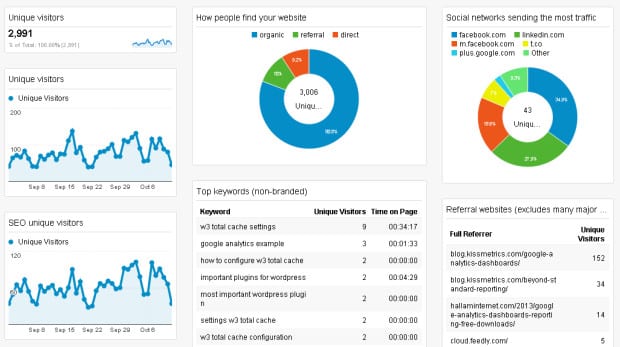
The advantage of tracking SEO performance with an easy to understand dashboard is that you can see where to improve. If the bounce rate is high, you can update the content. If your click-through rate is low, tweak your CTAs. You can also address issues like page speed and mobile optimization.
Being aware of SEO metrics is essential for improving content performance and ensuring that your keywords match search intent and product awareness level. It also means you can focus on tactical SEO, creating structured content that meets the demands of search engine algorithms and users.
In the next section, we’ll consider the best SaaS SEO metrics and KPIs for SaaS businesses.
Vital SaaS SEO KPIs to monitor
What do you want to achieve with SEO? Instead of vague goals such as “increase signups for free trials”, you need to set specific, quantifiable objectives—which is where SEO SaaS KPIs come in.
Here are some of the vital KPIs for SaaS companies:
Keyword rankings
This measures where your website is ranking in the SERPs for target keywords. If you rank more highly for a greater number of keywords, you’ll get more organic traffic and more leads, indicating more conversions and revenue in the future.
To link keyword ranking with conversion rates, you’ll need to consider the search intent (for example, informational keywords have lower conversion rates than commercial ones).
Organic traffic
You can directly attribute an increase in organic traffic to a successful SEO strategy.
It’s a good idea to categorize this traffic based on factors like source, user type, device type, or language—and if you classify it by content type, you can see which areas of the website are performing best and which require extra resources.
Non-branded vs. branded searches
This KPI is important for showing brand awareness growth. People who already know your brand will type it directly into Google, but non-branded searches occur when someone searches for a topic or keyword.
The latter is an indication that people are finding your site via the SERPs, and helps to identify your best-performing pages.

Organic impressions
This metric measures the number of times your website appeared in organic search results over a certain period of time.
You want this figure to be as high as possible, showing that more visitors have had the opportunity to click through to your site. The organic clicks metric is a measurement of how many times a user clicked on your website from the search engine results pages during a specified time period.
Organic CTR
Organic click-through rate shows how often an organic impression leads to an organic click, with a higher figure indicating effective metadata and a strong domain.
It also tells you where on the page people are clicking, so you can assess visitor intent on your site and likeliness to convert—plus the performance of your on-page SEO such as CTA copy and placement. If they didn’t click the CTA, why not?
Bounce rate
Another essential part of SEO KPI reporting, bounce rate shows the percentage of users who leave immediately after landing on your page, without navigating around the site or interacting with on-page elements.
It’s a sign of how engaging your content is, and its relevance to the keywords you’re targeting. These need to match the search intent, which is prioritized by search engines.
Average time on site
Sometimes called “dwell time”, this tells you how long the average user stays on your website, whether they’ve come from a search engine or a referral link.
You can also measure average pages per session (the average number of pages visited during a browsing session) and scroll depth (how far users are scrolling down on specific pages on your site).

Site speed
Slow loading pages and images increase the bounce rate and reduce the amount of time users spend on your site.
A site that loads in one second has a conversion rate three times higher than a site that loads in five seconds. Page speed is also a direct ranking factor, thanks to Google’s Algorithm Speed Update. Also pay attention to Average Server Response Time, the average time your web server takes to return the results of a request to the user.
Crawl errors
Search engine bots or crawlers need to be able to index your pages in order to rank them, otherwise all your SEO efforts will be a waste of time.
By measuring and identifying crawl errors, you have the opportunity to fix problems like broken links, server errors, and duplicate content issues.
Total backlinks
This quantifies the total number of existing links from other websites to pages on your website.
The more you have, the more likely you are to rank highly on the SERPs, because backlinks boost your domain authority. They indicate that people trust your brand.
Referring domains
This figure shows how many different websites are linking to each page on your site.
Variety is the key here—if you have 200 links from 200 different websites, your own site will be seen by search engines as more authoritative and trustworthy than if you had 200 links from a single website.
Revenue
As we mentioned, B2B SaaS typically has a long sales process—which can make it difficult to attribute revenue to the correct source.
You’ll need to analyze the data carefully in order to show the return on investment of your SEO efforts, which should support long-term financial growth.
Key SaaS metrics to analyze against
Now we’ll go through some important metrics to your SaaS website. These are the ones you should be measuring against in order to support the KPIs you’ve chosen.
MQLs, SALs, SQLs, PQLs

Or, to give them their formal names: Marketing Qualified Leads, Sales Accepted Leads, Sales Qualified Leads, and Product Qualified Leads.
Although these don’t only relate to SEO, they’re an indication that people are discovering and engaging with your brand:
- MQLs: Leads who have expressed interest in your product, such as by downloading an eBook
- SALs: Leads that the sales team has accepted and agreed to nurture
- SQLs: Leads determined by the sales team to be the most likely to convert
- PQLs: Leads who are trying your product and are likely to become paying customers.
Lead conversion rate
This is the percentage of MQLs that successfully convert into SALs, SQLs, or PQLs.
How many are you achieving each month, quarter, or year? Can you attribute this to SEO tactics, such as a high-performing piece of content, or correlate it with a recent rise in your SERP rankings?
Lead-to-win Rate
This metric shows the percentage of leads who entered the sales funnel and are now classed as “Closed Won” customers—which means that they took out a subscription and became paying users of your product.
This relates to product-market fit and pricing, but also to the way your optimized content has encouraged people to convert.
Average Revenue Per User (ARPU)
In other words, total revenue divided by the number of active users. You can increase this number through upselling and cross-selling, such as persuading the customer to upgrade to a more expensive subscription plan—and attribute successes to specific pieces of content.
Customer Acquisition Cost (CAC)
CAC represents how much it costs your business to acquire a new customer, including the time and resources spent on SEO efforts.
You need this figure to be lower than the revenue generated by that user. The CAC Payback Period is the time it takes for a customer to earn you back their costs.
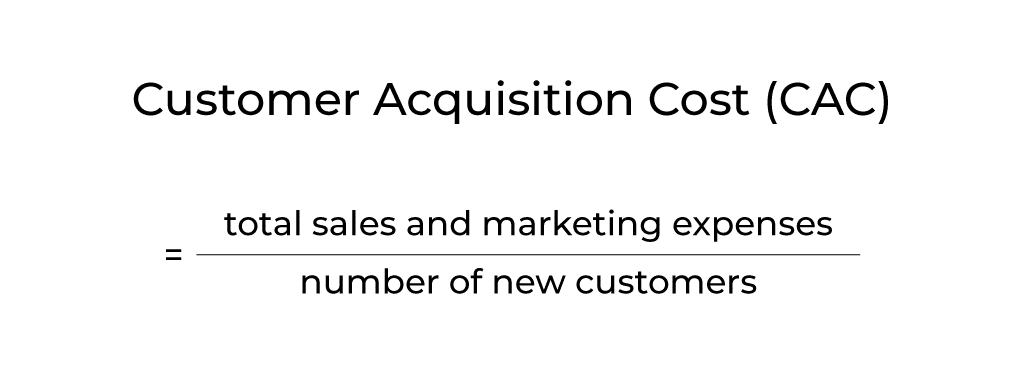
Customer Lifetime Value (CLTV)
One of the most important SaaS business metrics, CLTV indicates the total revenue you can reasonably expect from one customer over their predicted lifespan with your company. This helps you to identify your most valuable customer groups—meaning you’ll know where to focus your resources.
Number of users
Two important metrics to measure here: Active Users Per Account (the total number of unique users that log in to their own accounts) and Website New Users—people visiting your site for the first time.
Google Analytics assigns a unique identifier to each user, so it can tell if they’re new or returning.
True trial engagement
This denotes any user who starts a free trial of your product and then returns a second time within the first seven days.
These users are more likely to become paying customers, and the metric helps you to assess product engagement (and measure SEO performance if the lead was generated via organic traffic).
Monthly Recurring Revenue (MRR)
In SaaS, most of your revenue comes via monthly subscriptions. This figure is your MRR, which only includes recurring revenue and excludes any one-off payments. It helps you to maintain a steady cash flow because you can predict the revenue you expect to receive each month.
Another key metric for SaaS companies is the MRR renewal rate, which shows the percentage of MRR retained from existing customers. And you can measure the amount of MRR from organic traffic, or the number of subscriptions obtained through SEO efforts—which helps you identify high-performing pages.
Churn rate
Churn rate is a critical metric for SaaS, as it shows how many customers stopped paying for or using your product over a specific period.
It can also be an SEO measurement as it’s an indicator of customer engagement. Net MRR Churn Rate is the percentage change in MRR due to cancellations or downgrades.

Best tools to measure SaaS SEO metrics
With so many metrics and KPIs to measure, you’re going to need some robust SaaS SEO tools to help you.
Here’s a round-up of some popular options for tracking SEO results:
Google Analytics
It’s easy to use Google Analytics for SEO analysis. This free tool measures all the key metrics for SaaS, collecting and analyzing a huge amount of data to provide a full overview of site performance. When you first start an account, you’ll get a tracking code to install on every page of your website.
Google Analytics tracks how many visitors you get, as well as their demographics and interests. It records things like the devices and browsers used by visitors, which pages they visit, and what they do on your site—like clicking a link or filling out a form.
You can see your bounce rate and best-performing pages, compare organic Vs. paid traffic, and view landing page data by clicks, impressions, and average position. GA shows you conversion rates for mobile compared to desktop, sends alerts for 404 errors, and generates regular reports.
Google Search Console
Google Search Console, which is also free to use, monitors how your website appears in the Google SERPs, and helps you to understand and improve how Google sees your site.
It tells you which keywords people are searching in order to find your content, as well as what content they’re finding and where it’s ranking on Google.
GSC gives you more in-depth information such as the latest data for organic clicks, organic CTR, organic impressions, keyword ranking, and referral sites. It can carry out backlink analysis, and you can also sync the tool with Google Analytics.
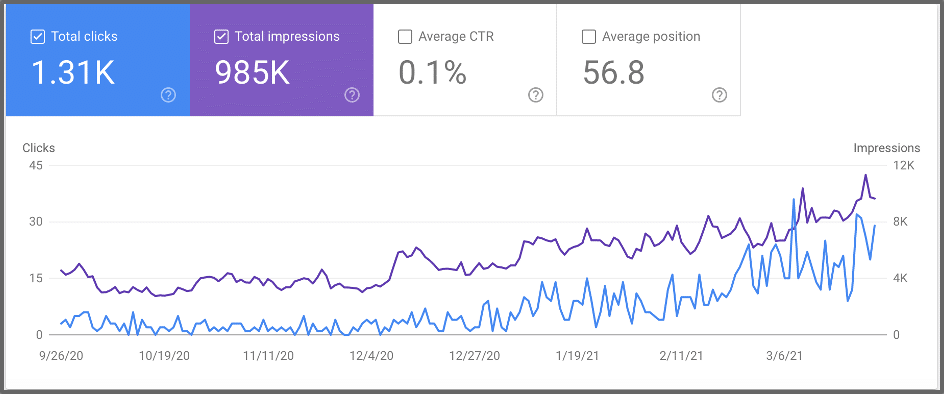
Ahrefs
Ahrefs offers a range of free tools for SEO analysis (although they’re limited compared to the paid plans). This includes a website checker to carry out audits and monitor your site’s SEO health, as well as a keyword generator, keyword difficulty checker, and specific keyword tools for Amazon, Bing, and YouTube.
As well as viewing your site’s rankings and analyzing competitors with the traffic checker tool, you can use Ahrefs to check for issues like broken links and redirects, check the authority of domains you’re considering linking to, and monitor your existing backlinks.
SEMrush
SEMrush also has an array of tools for SEO, all of which you can try for free. Among them are rank tracking and keyword research tools, plus an integration with Google Analytics for organic traffic insights.
There’s also an SEO content template with recommendations based on your target keywords, and an SEO writing assistant.
Technical SEO tools include an on-page SEO checker, and a site audit tool that gives you a detailed list of improvements from across more than 130 different ranking factors. SEMrush also has automated link building and backlink analytics, which lets you track up to five competing backlink profiles, and run a backlink audit.
The alternative
Although there are numerous similar tools on the market, and many of them are free of charge, it does take time to learn how to make the most of them—and to know what to do with the results they generate.
You could take an online course, but the alternative is to consider working with a SaaS SEO agency who will measure the SEO metrics for you—or work alongside your team.
accelerate agency will run a site audit, carry out competitor analysis, provide ongoing reports, find high authority links, and produce optimized content.
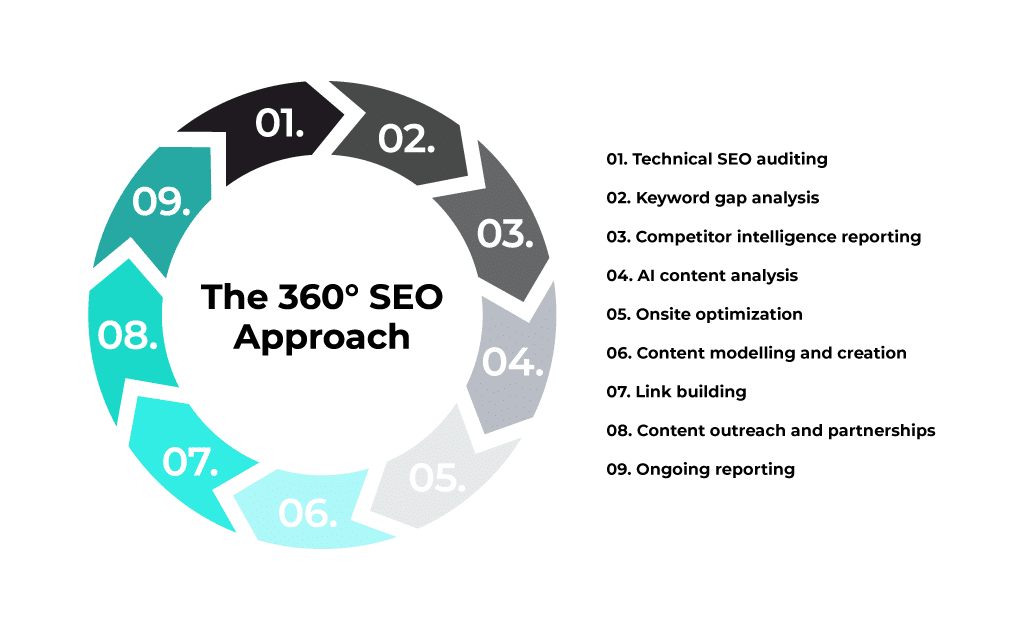
Gauge your success with SaaS SEO metrics
If SEO is essential for SaaS companies, then measuring SEO metrics is essential for making sure your strategy is on the right track.
Using the best SaaS SEO metrics and KPIs, as discussed in this post, will help you identify areas for improvement and pages to prioritize. If you get the SEO right, customers will find you—meaning you don’t have to spend so much on paid marketing.
It’s best to work with an experienced SaaS SEO agency, which can help you focus on the right metrics and use the data to boost traffic and sales. That way, you can be sure you’re getting the most out of your investment in SEO.



